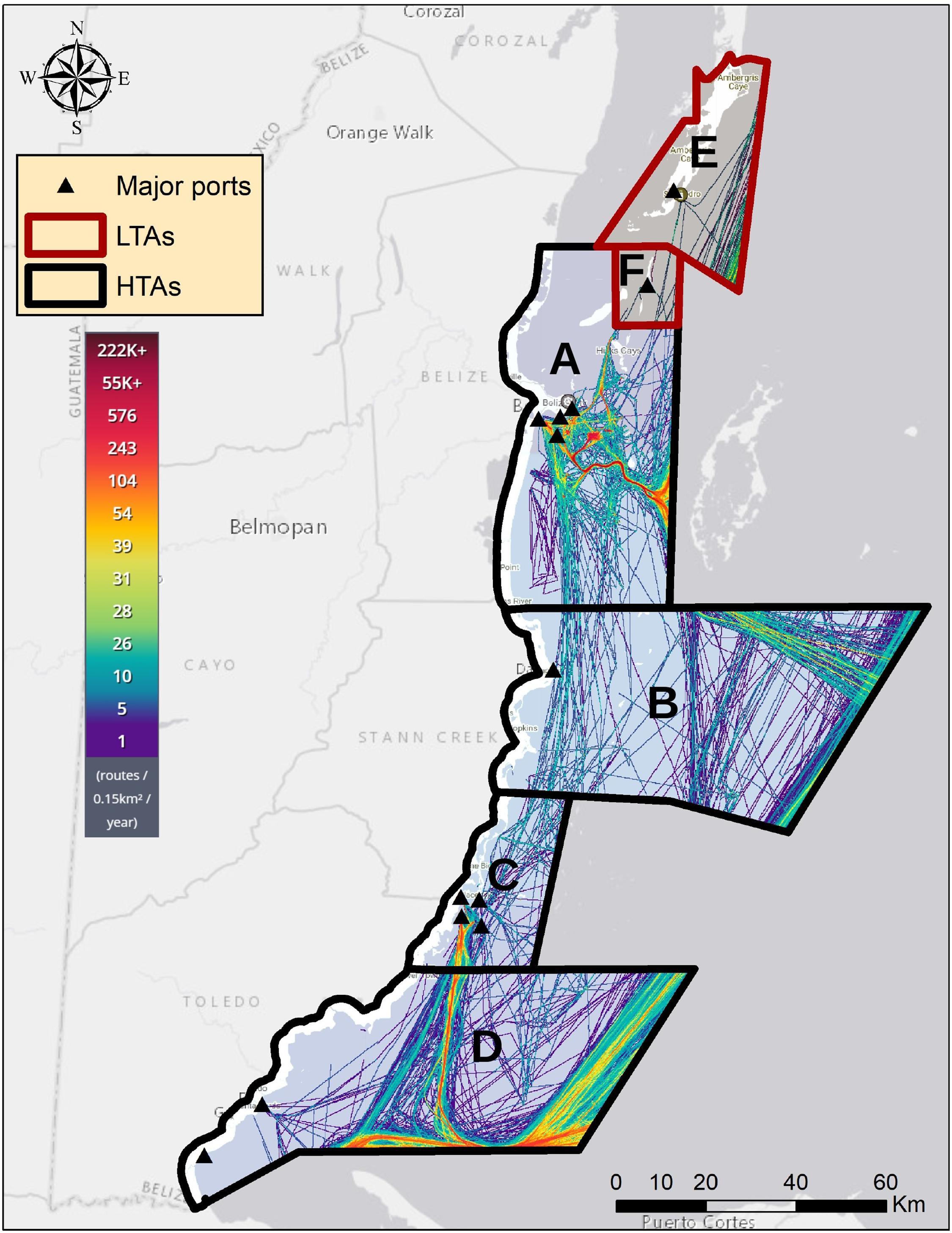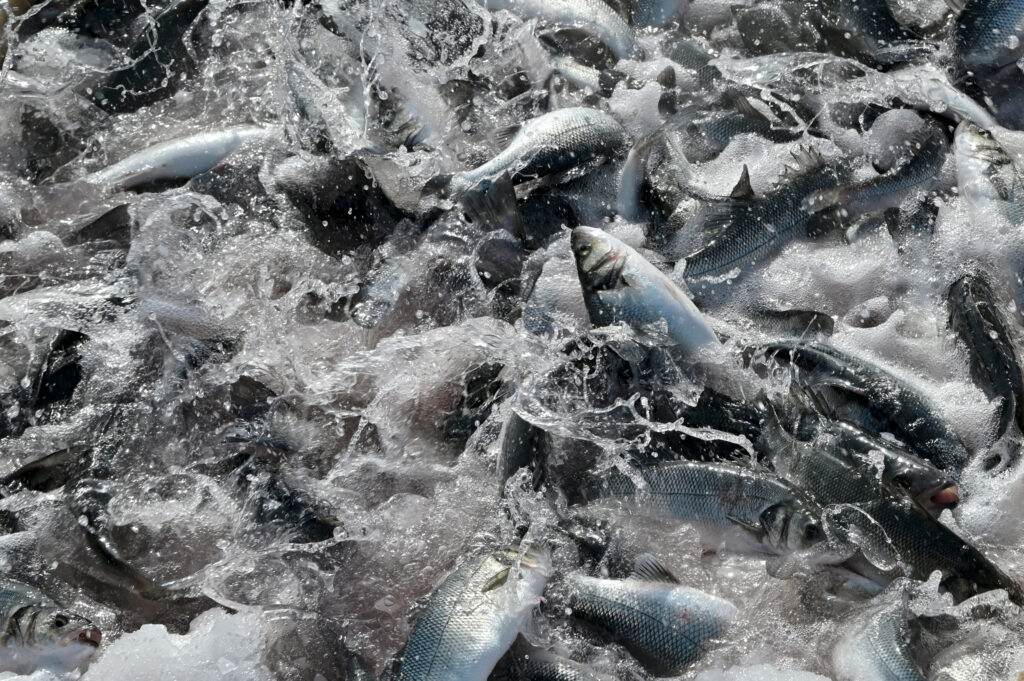COVID-19 anthropause affects coral reef ecosystems through biophysical changes – Nature

Report on the Biophysical Effects of the COVID-19 Anthropause on a Coral Reef Ecosystem
Executive Summary
This report details the findings of a study conducted at Hanauma Bay, Hawai‘i, which quantified the environmental and biological responses to the temporary cessation and subsequent managed return of human visitors during the COVID-19 pandemic. The “anthropause” provided a unique natural experiment, revealing the significant inhibitory effects of human presence on a coral reef ecosystem. The results demonstrate measurable improvements in water clarity, increased presence of an endangered species, and restored ecosystem functions, offering critical insights for aligning marine tourism management with the United Nations Sustainable Development Goals (SDGs), particularly SDG 14 (Life Below Water), SDG 8 (Decent Work and Economic Growth), and SDG 12 (Responsible Consumption and Production).
Introduction: Aligning with Sustainable Development Goals
The COVID-19 pandemic induced a global alteration in human activity, offering an unprecedented opportunity to quantify anthropogenic impacts on natural systems. This study leverages this “anthropause” to assess a heavily visited coral reef ecosystem, providing data crucial for advancing several SDGs. The central challenge addressed is the balance between the economic necessity of tourism, which supports SDG 8 (Decent Work and Economic Growth), and the imperative to conserve marine environments as mandated by SDG 14 (Life Below Water). By examining the ecosystem’s response to reduced human pressure, this report provides an evidence-based framework for developing sustainable tourism practices in line with SDG 12 (Responsible Consumption and Production).
Key Findings and SDG Implications
Impact on Water Quality (SDG 6 & SDG 14)
- Finding: Water clarity in Hanauma Bay was strongly influenced by human presence. It improved significantly during the complete closure and decreased as the number of daily visitors increased upon reopening.
- SDG Implication: This finding directly supports SDG 14.2 (sustainably manage and protect marine and coastal ecosystems) by demonstrating that managing visitor density can mitigate physical disturbances like sediment resuspension. It also aligns with the principles of SDG 6 (Clean Water and Sanitation) by highlighting a direct link between human activity and aquatic environmental quality.
Conservation of Marine Biodiversity (SDG 14 & SDG 15)
- Finding: The presence of the endangered Hawaiian monk seal (Neomonachus schauinslandi) more than doubled during the COVID-19 closure period. Seals were observed on approximately 45% of days when the bay was closed, compared to only 20% of days when it was open to the public.
- SDG Implication: Reduced human disturbance allows endangered species to utilize critical habitats. This underscores the importance of managed access and protected areas to achieve SDG 14.5 (conserve at least 10 per cent of coastal and marine areas) and supports the broader biodiversity protection goals of SDG 15 (Life on Land).
Reef Fish Populations and Ecosystem Function (SDG 14)
The study revealed complex responses in fish populations and behavior, indicating that human presence alters fundamental ecosystem processes critical to reef health.
- Fish Density: Diver-observed fish density was significantly lower during the pre-COVID period (highest visitor numbers) compared to the closure and post-COVID reduced-capacity periods. This suggests that chronic, high-level human presence displaces fish populations.
- Herbivore Grazing: The rate of algal grazing by parrotfish—a key ecosystem function that prevents algal overgrowth on corals—decreased dramatically with the return of human visitors. At the most heavily visited site, aggregate parrotfish bites dropped from 4.4 bites/minute during the closure to 0.6 bites/minute post-reopening.
- Fish Behavior: While chronic human presence appears to deter fish, their short-term behavior showed an attraction to snorkelers, likely due to the resuspension of food particles. Concurrently, aggressive interactions between fish were less frequent at higher levels of human presence, suggesting a disruption of natural behaviors.
- SDG Implication: The suppression of herbivory is a direct threat to coral reef resilience and the long-term health of the ecosystem, undermining efforts to achieve SDG 14.2. The alteration of natural fish behaviors indicates that human impacts extend beyond simple presence, affecting the ecological functions that sustain marine life.
Discussion: Balancing Conservation and Sustainable Tourism (SDG 8, SDG 12, SDG 14)
The collective findings illustrate that chronic human presence has a measurable, inhibitory effect on the Hanauma Bay coral reef ecosystem. The pathogen-induced anthropause revealed that reducing human visitation allows for the rapid recovery of key biophysical parameters. This presents a clear pathway for aligning tourism with conservation goals.
- Sustainable Tourism Models (SDG 12): The post-anthropause management strategy at Hanauma Bay, which involved reopening at a significantly reduced visitor capacity (from 3,000/day pre-COVID to 750/day), serves as a practical example of sustainable tourism. This approach mitigates negative ecological impacts while maintaining economic activity.
- Economic Viability and Conservation (SDG 8): While reef tourism is a vital economic driver, its long-term viability depends on the health of the ecosystem. This study provides the ecological justification for visitor management strategies, such as carrying capacities or dynamic pricing, that can ensure the industry’s sustainability and contribute positively to SDG 8 without degrading the natural assets upon which it depends.
- Synergistic Threats: The combined impacts of reduced water clarity (increasing sedimentation stress on corals) and suppressed herbivory (promoting algal growth) create a synergistic threat to reef health. Proactive management of human visitation is therefore essential for building reef resilience against climate change and other stressors, a core objective of SDG 14.
Recommendations for Achieving Sustainable Development Goals
Based on the evidence from this study, the following actions are recommended for the management of Hanauma Bay and other sensitive marine ecosystems globally:
- Implement and enforce science-based visitor carrying capacities to minimize physical disturbances and behavioral impacts on wildlife, directly supporting SDG 14.2 and SDG 14.5.
- Develop and promote sustainable tourism models that prioritize ecosystem health, potentially offsetting revenue loss from lower visitor numbers with higher-value experiences, in line with SDG 12 and SDG 8.
- Invest in continued monitoring and research to understand the thresholds of human impact on various ecosystem functions, contributing to the scientific knowledge base required by SDG 14.a.
- Foster multi-stakeholder partnerships (SDG 17) between government agencies, research institutions, local communities, and the tourism sector to co-develop and implement integrated management plans for coastal areas.
Methodology Overview
The study was conducted at the Hanauma Bay Nature Preserve on O‘ahu, Hawai‘i, a no-take Marine Life Conservation District. Data were collected before, during, and after the COVID-19 closure (April-December 2020). The methods included:
- Human Presence Quantification: Cumulative counts of snorkelers and waders in four reef sectors, supplemented by official daily visitor data.
- Water Clarity Measurement: Horizontal Secchi disk readings to quantify water visibility.
- Monk Seal Surveys: Daily presence/absence surveys of Hawaiian monk seals hauled out on the beach.
- Fish Abundance Surveys: Visual belt transects (25m x 5m) to survey fish community density and composition.
- Fish Behavioral Observations: Analysis of video footage from an array of underwater cameras to quantify time budgets for behaviors such as feeding, aggression, and grazing (bite rates).
Analysis of Sustainable Development Goals in the Article
1. Which SDGs are addressed or connected to the issues highlighted in the article?
The article highlights issues that are directly connected to several Sustainable Development Goals (SDGs). The primary focus on marine ecosystems, biodiversity, and the impact of human activities links the research to the following SDGs:
- SDG 14: Life Below Water: This is the most prominent SDG addressed. The entire study is centered on a coral reef ecosystem in Hanauma Bay, Hawai’i. It investigates the impacts of human presence on water quality, marine wildlife (endangered Hawaiian monk seals, reef fishes), and key ecosystem functions like herbivory. The article’s core purpose is to understand how to conserve and sustainably use marine resources, which is the essence of SDG 14.
- SDG 15: Life on Land: Although focused on a marine environment, this goal is relevant because it aims to “protect, restore and promote sustainable use of terrestrial ecosystems… and halt biodiversity loss.” The study’s findings on the endangered Hawaiian monk seal (Neomonachus schauinslandi), a species that uses both marine and coastal habitats, directly relate to protecting threatened species and halting biodiversity loss. The principles of ecosystem protection and managing human impacts are transferable between marine and terrestrial contexts.
- SDG 8: Decent Work and Economic Growth: The article explicitly discusses the economic dimension of the issue, particularly in relation to tourism. It acknowledges that “reef tourism’s importance to local economies” and its “economic value” must be balanced with conservation. This connects to the goal of promoting “sustained, inclusive and sustainable economic growth.” The discussion about managing visitor numbers to ensure ecological preservation while maintaining economic benefits from tourism directly addresses the promotion of sustainable tourism.
- SDG 12: Responsible Consumption and Production: This goal is about ensuring sustainable consumption and production patterns. The article’s analysis of tourism’s impact on the Hanauma Bay ecosystem is a case study in the environmental consequences of consumption patterns (in this case, the consumption of nature through tourism). The recommendation to implement and manage visitor limits is a direct strategy for promoting more sustainable tourism, which aligns with achieving sustainable management and efficient use of natural resources.
2. What specific targets under those SDGs can be identified based on the article’s content?
Based on the article’s detailed analysis, several specific SDG targets can be identified:
-
Target 14.1: By 2025, prevent and significantly reduce marine pollution of all kinds, in particular from land-based activities, including marine debris and nutrient pollution.
- Explanation: The article demonstrates a direct link between human presence (visitors) and reduced water quality. It states, “As the total number of daily visitors increased, water clarity decreased significantly,” likely due to “sediment resuspension.” This reduction in water clarity is a form of physical pollution that degrades the marine environment. The study shows that reducing human visitors directly reduces this impact, aligning with the goal of preventing and reducing marine pollution.
-
Target 14.2: By 2020, sustainably manage and protect marine and coastal ecosystems to avoid significant adverse impacts, including by strengthening their resilience, and take action for their restoration in order to achieve healthy and productive oceans.
- Explanation: Hanauma Bay is a Marine Life Conservation District (MLCD), a type of marine protected area. The study’s entire premise is to understand human impacts to better manage and protect this coastal ecosystem. The findings that reduced human presence led to improved water clarity, increased monk seal presence, and restored fish behavior (herbivory) are direct evidence of how managing human activity can strengthen ecosystem resilience and lead to restoration.
-
Target 14.5: By 2020, conserve at least 10 per cent of coastal and marine areas, consistent with national and international law and based on the best available scientific information.
- Explanation: The study is conducted within an established MLCD, highlighting the importance of such protected areas. The research provides “best available scientific information” that reinforces the effectiveness of managing these conserved areas and provides data-driven insights for future management decisions, such as setting visitor limits.
-
Target 15.5: Take urgent and significant action to reduce the degradation of natural habitats, halt the loss of biodiversity and, by 2020, protect and prevent the extinction of threatened species.
- Explanation: The article provides specific data on the endangered Hawaiian monk seal. It found that “the percentage of days when monk seals were observed at the bay more than doubled during the COVID closure period.” This demonstrates that reducing human disturbance is a significant action that can help protect this threatened species by allowing them to utilize critical habitats without pressure.
-
Target 8.9: By 2030, devise and implement policies to promote sustainable tourism that creates jobs and promotes local culture and products.
- Explanation: The article concludes by emphasizing the need for managers to “find a balance between visitor management and ecological preservation.” The decision to reopen Hanauma Bay with a drastically reduced visitor capacity (from 3000/day pre-COVID to 750/day post-COVID) is a clear example of implementing a policy to promote more sustainable tourism. This policy aims to maintain the economic benefits of tourism while minimizing its negative ecological footprint.
3. Are there any indicators mentioned or implied in the article that can be used to measure progress towards the identified targets?
Yes, the article is rich with quantitative data and metrics that serve as direct or implied indicators for measuring progress towards the identified targets.
- Water Clarity: The study uses “horizontal visual reading of the Secchi disc” to quantify water clarity. This is a direct indicator for Target 14.1 (reducing marine pollution). An increase in Secchi disk distance signifies improved water quality and less sediment suspension.
-
Presence and Abundance of Wildlife:
- Monk Seal Presence: Measured as “the percentage of days when monk seals were observed.” This serves as an indicator for Target 15.5 (protecting threatened species). An increase in this percentage suggests a healthier, less disturbed habitat for the endangered seals.
- Fish Density and Abundance: Measured through “visual 25 m × 5 m (125 m²) belt transect” surveys (density) and camera trap data (abundance). These are indicators for Target 14.2 (protecting marine ecosystems). Higher fish density and natural abundance patterns indicate a healthier reef ecosystem.
-
Ecosystem Function Metrics:
- Herbivore Grazing Rate: Quantified as “parrotfish bites per unit time” (e.g., 4.4 bites/minute during closure vs. 0.6 bites/minute post-reopening). This is a sophisticated indicator for Target 14.2, as herbivory is a critical function for maintaining coral reef health by controlling algae. A higher, more natural grazing rate indicates a better-functioning ecosystem.
-
Tourism Intensity:
- Number of Daily Visitors: The article uses “total number of daily visitors” as a primary variable. This metric serves as a management indicator for Target 8.9 (sustainable tourism). Tracking and managing this number is the core policy tool discussed for balancing economic and ecological goals. The reduction from a maximum of 3000 visitors/day to 750/day is a quantifiable measure of progress towards more sustainable tourism.
4. Table of SDGs, Targets, and Indicators
| SDGs | Targets | Indicators Identified in the Article |
|---|---|---|
| SDG 14: Life Below Water |
14.1: Reduce marine pollution.
14.2: Sustainably manage and protect marine and coastal ecosystems. 14.5: Conserve coastal and marine areas. |
|
| SDG 15: Life on Land | 15.5: Protect threatened species and halt biodiversity loss. |
|
| SDG 8: Decent Work and Economic Growth | 8.9: Devise and implement policies for sustainable tourism. |
|
| SDG 12: Responsible Consumption and Production | 12.b: Develop and implement tools to monitor sustainable development impacts for sustainable tourism. |
|
Source: nature.com

What is Your Reaction?
 Like
0
Like
0
 Dislike
0
Dislike
0
 Love
0
Love
0
 Funny
0
Funny
0
 Angry
0
Angry
0
 Sad
0
Sad
0
 Wow
0
Wow
0

















































:focal(1500,1000)/https://media.globalcitizen.org/a6/9a/a69a4720-d8a1-4715-b596-18738d03c05c/rotary_polio_hero_image.jpg?#)






/countries/sri-lanka/photo-credit---dmc-sri-lanka.tmb-1200v.jpg?sfvrsn=dc298bcc_1#)

















